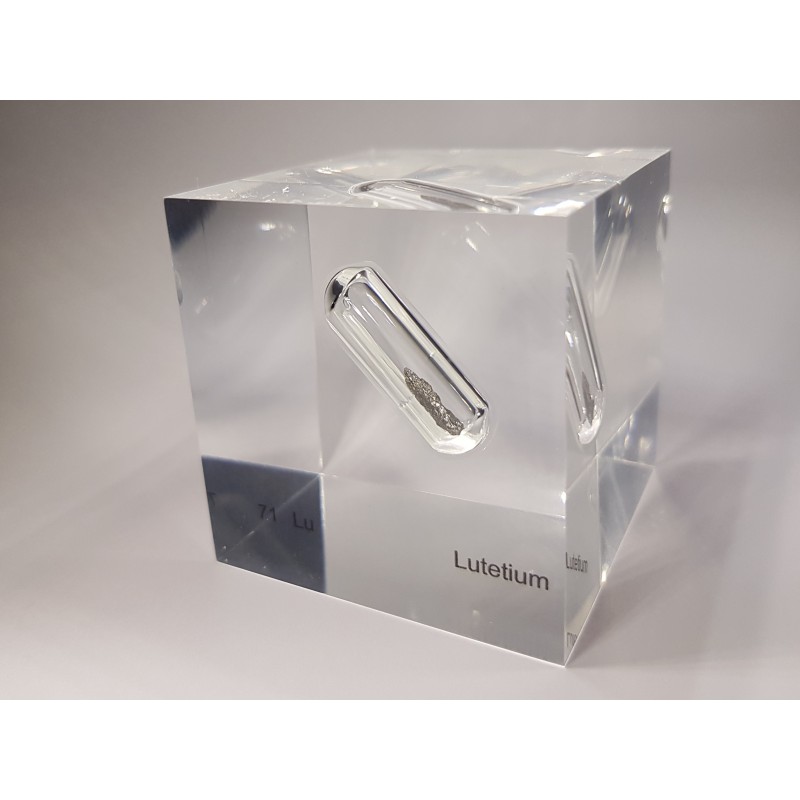



High purity erbium in glass ampoule protected by argon in a 50x50x50mm acrylic cube. As the sample is embedded in acrylic glass, it can be viewed safely. Start your collection of the 118 elements in decorative acrylic cubes now!
Lutetium, with the chemical symbol Lu and atomic number 71, was independently discovered in 1907 by scientists Carl Auer von Welsbach and Georges Urbain. Urbain isolated the element from ytterbium and cerium ores and named it after the Latin designation for Paris, "Lutetia."
On Earth, lutetium is relatively scarce, constituting about 0.0005% of the Earth's crust. Despite its limited abundance, it has interesting applications, particularly in nuclear medicine. Lutetium-177 is used in therapeutic radioactive tracers for treating certain types of cancer.
The production route of lutetium begins with extraction from minerals like monazite and xenotime, which contain rare earth elements. The isolation involves complex chemical processes, including extraction, ion exchange, and precipitation. The main production countries for lutetium are China and Russia, holding a significant share in global rare earth production. The future of lutetium could further unfold in nuclear medicine and potentially in catalysis research.